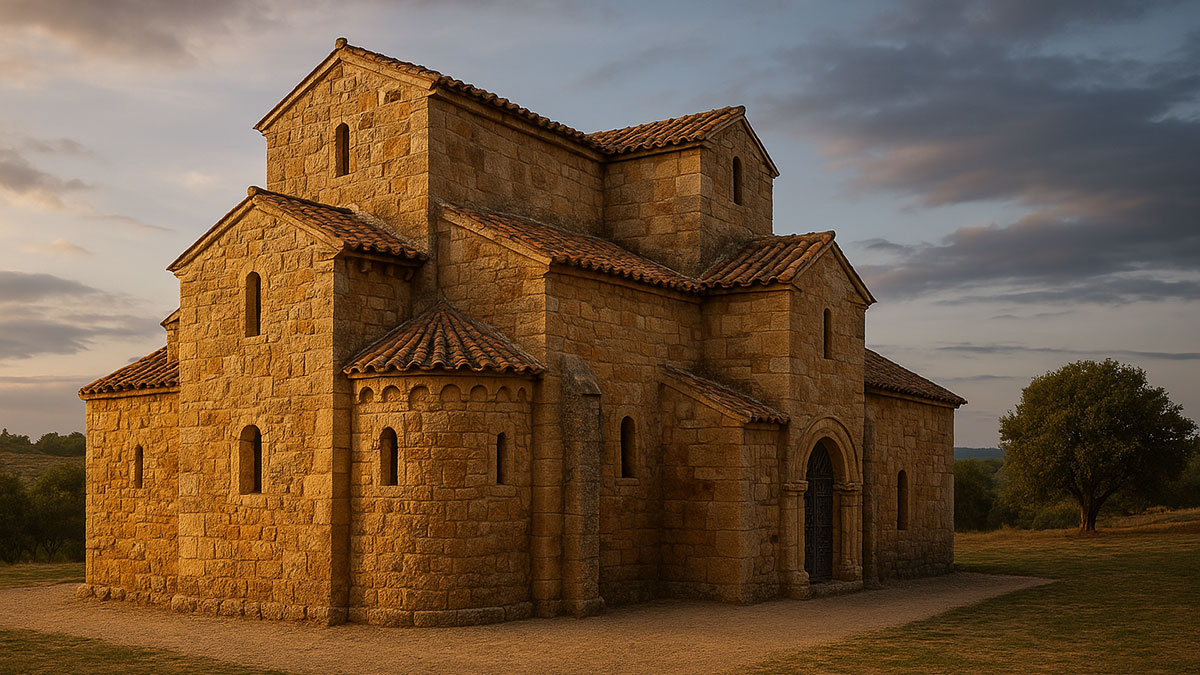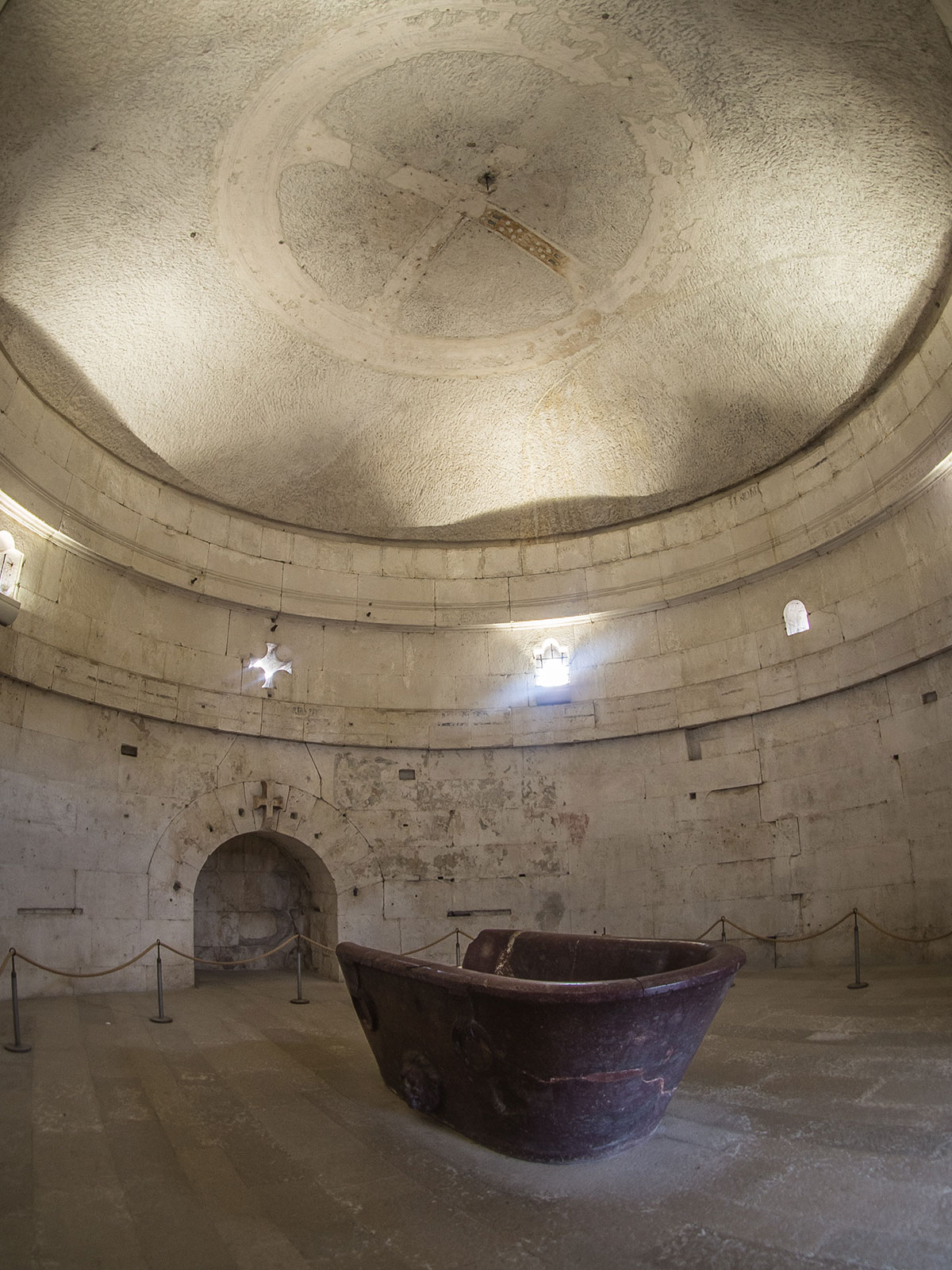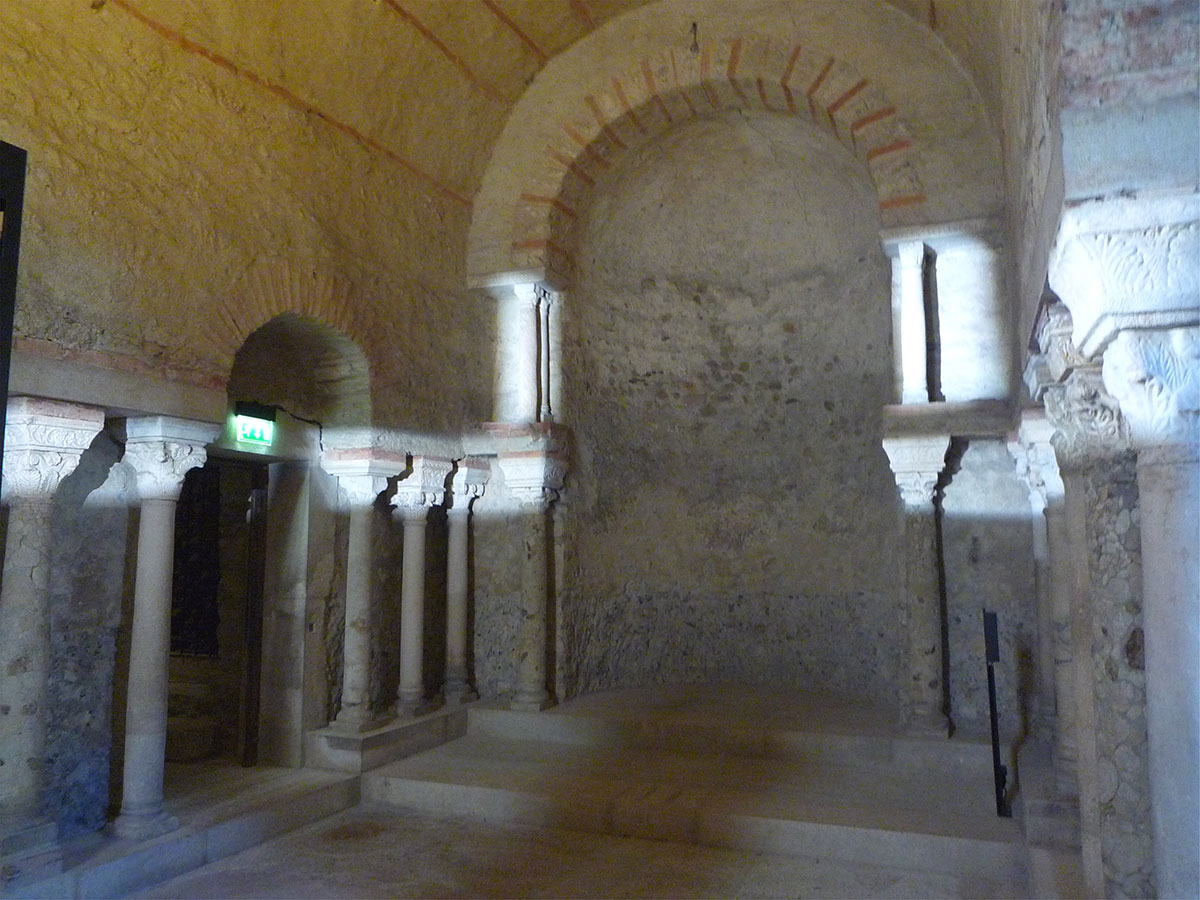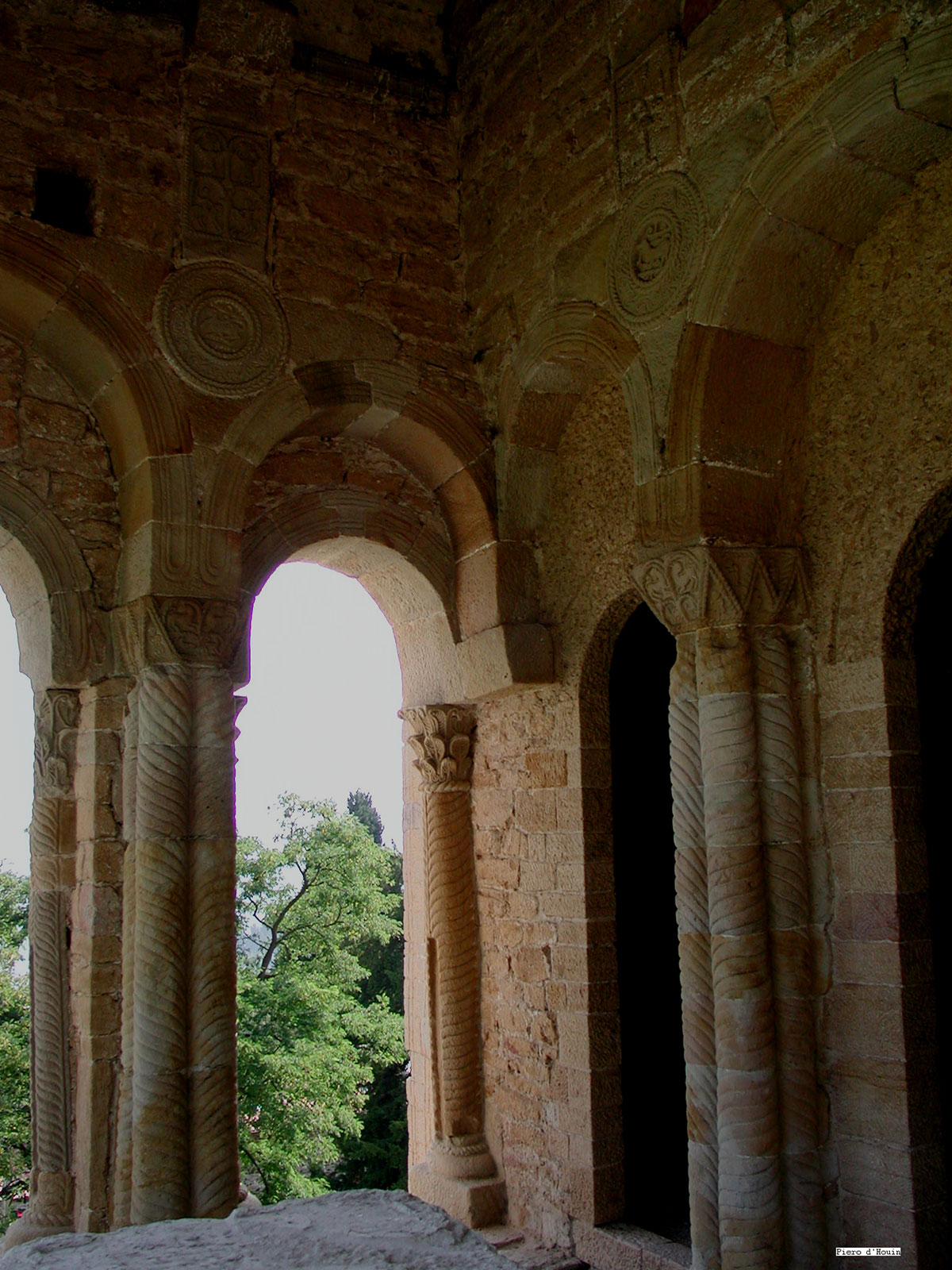After the decline of the Roman Empire, before the dawn of Romanesque architecture, pre-Romanesque architecture developed. In this dark interregnum, this architectural school developed a fascinating dialogue with light. In this way, the natural illumination of the interior of buildings and monuments transcended its mere practical aspect and became an architectural language, evoking the divine with every ray of light.
In Ostrogothic Italy in the 5th-6th century, the Basilica of St. Apollinaris Nuova and the Mausoleum of Theodoric in Ravenna reveal the new Germanic lords’ reinterpretation of the classical legacy. The monolithic dome of the mausoleum, through the light that penetrates through the windows at its base, transforms the space it covers into a solemn scenic element of the funerary monument.
On the other hand, in Merovingian Gaul, the 6th century crypt of Saint-Oyand gives the space a more intimate character. Its three eastern apses, ornamented with delicate stuccoes, filter the light through carefully placed windows. Oblique lighting seems to be the messenger of the sacred. This play of chiaroscuro anticipates the mysticism that was to characterise Romanesque art centuries later.
For their part, the Visigoths left jewels such as the church of San Pedro de la Nave on the Iberian Peninsula during the 7th century. They used thin sheets of alabaster to tame the light and produce an atmosphere of seclusion. Inside, the lighting converges ritually towards the altar. Centuries later, the Mozarabs of San Baudelio de Berlanga fused this heritage with Islamic art, using lattices and skylights that weave patterns of light and shadow and transform the space into a delicate tapestry.

Borjaanimal | wikimedia.org | CC BY-SA 4.0
The Carolingian Renaissance of the 8th century, under Charlemagne, was a turning point. The Palatine Chapel in Aachen uses an audacious system of clerestories and tribunes to pour zenithal light into the space. In this way it recreates the magnificence of Hagia Sophia, while heralding the verticality of the future Gothic. And in Asturias, Spain, Santa María del Naranco reinvents the same language: its twin alabaster windows bathe the interior with a golden light that seems to elevate the small nave, in a demonstration that monumentality is also achieved through the treatment of the interior lighting.
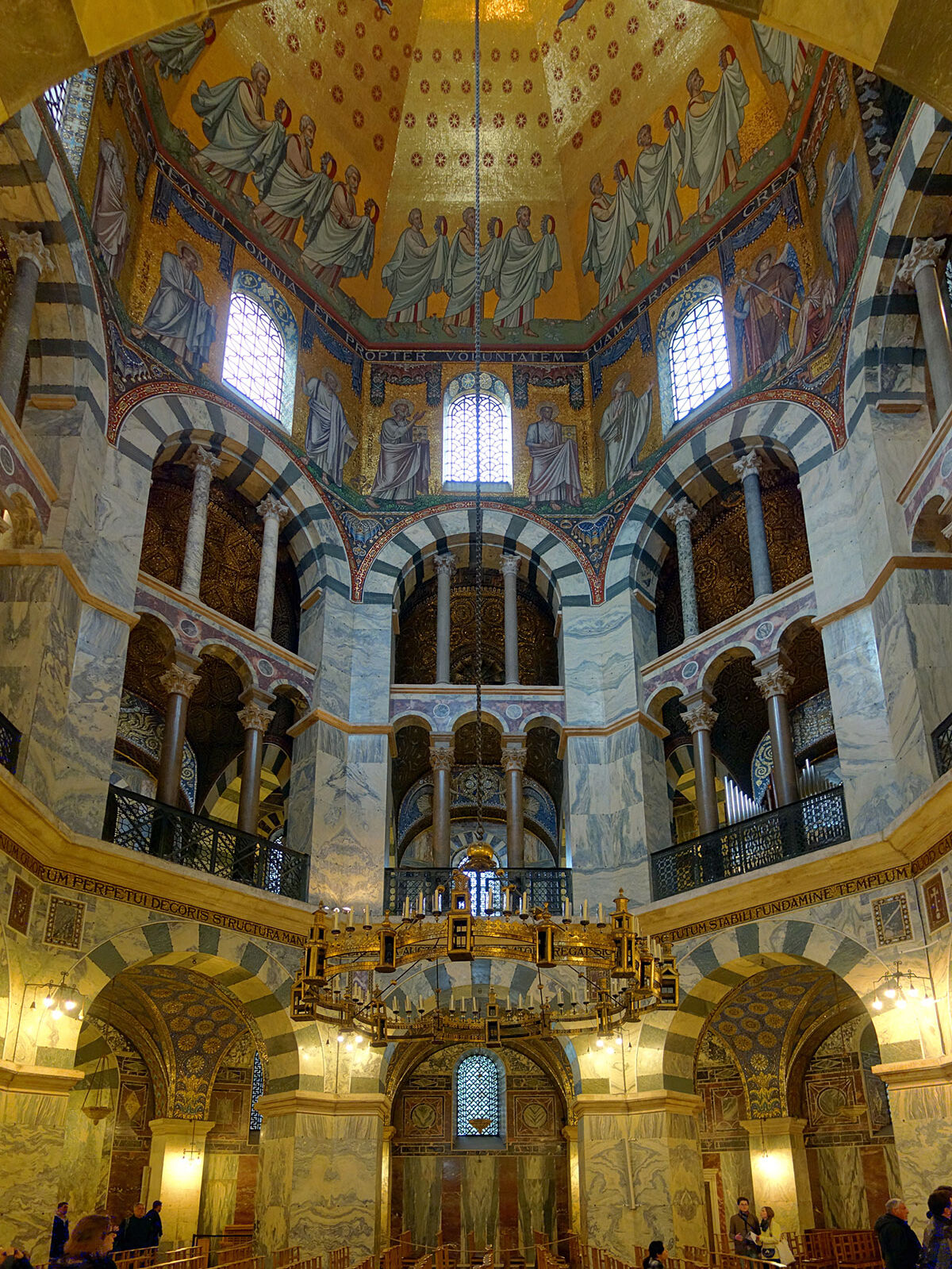
Velvet | wikimedia.org | CC BY-SA 3.0
These solutions were not mere technical exercises, but the manifestation of a worldview. Where the Ostrogoths and Carolingians sought a kind of epiphany through light, the Visigoths and Mozarabs preferred the seclusion of the half-light. This dialogue between light and shadow, between openness and seclusion, was the basis for the later development of the Romanesque, in whose school, illumination became a true theology written in stone and light.
By Guillermo Ferrer, senior architect in the Architecture Department of Amusement Logic


